
Italy: Europe’s first borderless Capital of Culture
Newswire
Rome: In 1947, Gorizia was abruptly split between Italy and Slovenia. In 2025, the two towns will reunite as the first transnational European Capital of Culture.
Right now, I’m standing in Nova Gorica – a modest but beautiful planned Modernist town in Slovenia with a population of 30,000. But if I take just a few steps, I can cross an invisible border into Italy to the medieval town of Gorizia, without even showing my passport.
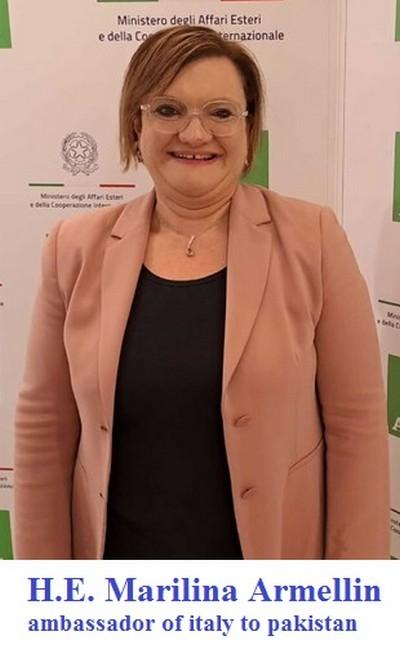
Once upon a time, Nova Gorica and Gorizia were one; the two cities were created – and separated – in 1947 after World War Two when the Treaty of Paris established Europe’s new borders, restricting travel between Italy and the former Yugoslavia. An Allied commission determined that Gorizia should belong to Italy and the less-developed part of town should be part of the Slovenian republic within the Socialist Federalist Republic of Yugoslavia. The new town was to be called Nova Gorica (New Gorizia), and from that moment on, Nova Gorica and Gorizia have existed as two towns split across two countries.
But with Slovenia’s entry into the EU in 2004, the border between them was dissolved, allowing a cross-cultural exchange for the first time in generations. And in 2025, Gorizia/Nova Gorica will reunite as the first transnational European Capital of Culture, in a project called GO!2025.
Because of this accolade, between two and five million visitors are expected to descend upon the two towns in 2025, compared to the usual 250,000 annual tourists. That’s a big leap for an otherwise under-touristed, out-of-the-way destination, even if Gorizia was dubbed “the Austrian Nice” from 1867 to 1918 when it was part of Austria-Hungary. To celebrate the honour, a robust calendar of cultural events, including musical and dance performances and art exhibits, has been launched. And I’m here to explore.
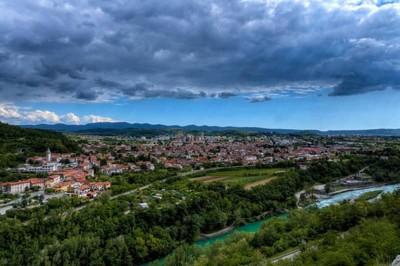
Though cut from the same cloth, the two towns couldn’t be more different. Medieval Gorizia is old-worldly, cobblestoned and lined with lively cafes, dominated by an imposing castle that features an expansive museum packed with interactive exhibits and high-tech installations that portray life in the castle through the ages.
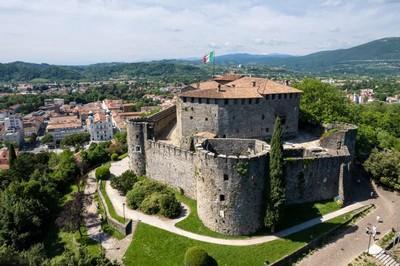
By contrast, Nova Gorica – designed to show the world that Josip Broz Tito’s Yugoslavia was capable of large-scale urban development– is Modernist, and its relative newness, with concrete architecture laid out in lines, is the most obvious clue that you’ve crossed a border.
As I wander around this planned town, once known mostly as a centre of casinos and nightlife for Italians, I’m not surprised that it has not been on my radar, despite the fact that I have lived in Slovenia for more than a decade. However, although Nova Gorica seems unglamorous on first sight, I soon discover hidden gardens, crumbling palaces and tucked-away Social Realist frescoes – all relics of its turbulent history. With any luck, the status of European Capital of Culture will offer millions a chance to be charmed and intrigued, as I soon am.
The European Capital of Culture is awarded by the EU each year to two towns (the other 2025 selection is Chemnitz, Germany). Towns apply nearly a decade in advance for this status, which provides many benefits, including EU funding for programming and new infrastructure like monuments and bridges, as well as touristic promotion.
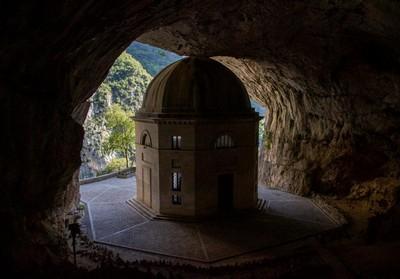
As the first transnational application for the title, the joint bid was particularly engaging; it’s refreshing to have a Capital of Culture that contains an intentionally open border and that celebrates the cultures on each side of it. The idea of a “borderless” capital, a laboratory on how nations can better connect and cooperate, navigating multiple languages and political systems, feels ideal for our time.
Administratively Gorizia and Nova Gorica are two towns, but in practice almost everyone who lives here speaks both Slovenian and Italian, and locals live and work on whichever side of the border they prefer. Tomaž Gržeta, for instance, is a Slovenian music journalist born in Nova Gorica but lives in Gorizia because he likes the vibe.
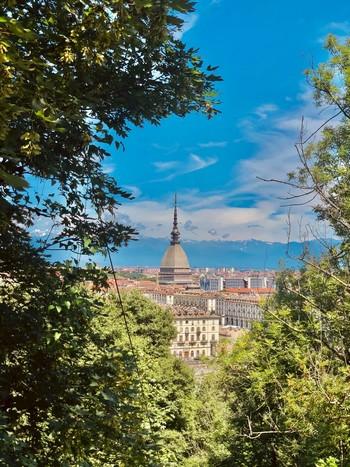
You won’t always be aware of when you cross between the countries; since 2004 there has been no checkpoint and no barrier. However, the border is celebrated at Piazza Transalpina (Transalpine Square) in front of the main train station (technically in Slovenia), where tourists line up to have their photos taken standing half in Slovenia, half in Italy. This is where the most expansive intervention has taken place as part of the GO!2025 programme, with the square newly transformed into a cultural, performance and museum space that includes both an underground art gallery and amphitheatre-like step seating that rise up like wings on either side of the border point.
Gorizia/Nova Gorica’s very borderlessness means that its history is complicated, to say the least, as it passed so frequently into different political hands: it was owned by the Habsburgs, the Counts of Gorizia, Napoleon, Austria-Hungary, the Kingdom of the Serbs, Croats and Slovenes, the Kingdom of Yugoslavia, the Kingdom of Italy, Yugoslavia, and now by Italy (Gorizia) and Slovenia (Nova Gorica).
My grandma was born in Austria-Hungary. My father was born in the Kingdom of Italy. I was born in Yugoslavia. If I had kids, they’d be born in Slovenia – Evelin Bizjak
Evelin Bizjak, a local tour guide, gave me an example as we stood outside the Slovenian smuggling museum, Muzej na Meji (MM). “We live in a house near Solkan,” she said, naming the world’s longest stone arch bridge, built in 1905, that spans the Soca River. “My grandma was born in Austria-Hungary. My father was born in the Kingdom of Italy. I was born in Yugoslavia. If I had kids, they’d be born in Slovenia.”
When the new border was drawn at the Paris Peace Conference, the Allied powers drew a straight line in pencil with a ruler on a map and instructed soldiers to paint along it. The line cut through fields, sometimes even houses. A photo from that year shows a cow with its hind legs in Italy and its front end in Slovenia. A few steps from where that photo was taken in the direction of Gorizia is Lasciapassare, the Italian smuggling museum. A hop, skip and a jump in the other direction is Muzej na Meji, its Slovenian counterpart. Each was built in their respective customs house, and the two miniature museums offer complimentary exhibits – the point is to visit both and cross the border, walking about 200 steps, in doing so.
The museums reveal what life was like along a border. Yugoslavs could cross with a special booklet that functioned as a day pass to travel a maximum of 30km. It contained vouchers that allowed you to buy goods unavailable in Yugoslavia to bring back home. Coffee, laundry detergent, bananas and chocolate were the hottest commodities for Yugoslavs, while Italians crossed the other way for meat and homemade schnapps. You had to smuggle anything more than what your vouchers permitted, and it was a common practice. A T-shirt sold by the Slovenian smuggling museum features a Yugo car with various illicit goods hidden in the panelling.
“When the border was drawn, families had two months to decide if they wanted to be Yugoslav or Italian,” said Alex Tamer, a docent at Lasciapassare. “Everyone around here has family on both sides.” Those who chose to be Yugoslav became the first residents of Nova Gorica, a municipal project that turned the cluster of houses and farms that had existed in the outskirts of Gorizia into a new town proper.
The design was entrusted to modernist architect Edvard Ravnikar, and thousands of residents of far-flung Yugoslav territories were invited to build the town in exchange for free housing and jobs in the new factories. But only about a quarter of it was built to Ravnikar’s design. The rest was erected piecemeal, prioritising budget over liveability, leaving the feel of Nova Gorica less a complete thought than an unfinished notion.
The final stop on my tour of town is Kostanjevica, a 16th-Century hilltop Franciscan church covered with scent-heady Bourbon roses and gnarled chestnut trees. The church was nearly levelled in World War One but lovingly restored after bombs tore apart all but the floor and the presbytery. But the main attraction is in the whitewashed crypt: six polished marble coffins that contain the remains of the French king Charles X Bourbon (1757–1836) and members of his family. His heart was removed and interred with him, like something out of a horror movie.
Charles X was the last Bourbon king of France and the only French king to be buried outside of France. He died here of cholera, but his reign was so unpopular that France didn’t want his body. So Charles’ family buried him beneath the local church in a coffin that stands on a plinth containing French soil. Perhaps a transnational town is a fitting resting place for a Franco-Austrian royal family with no kingdom to rule.
As I step out of the cool darkness of the marble-lined crypt, the Mediterranean sunlight pours over me. I can see both Gorizia and Nova Gorica from this hilltop. The Adriatic is just 30km away to the south, the Alps just 40km to the north. This is where these climates meet and where two cultures and nationalities have coexisted almost entirely in harmony. It’s the perfect place to see how borderlessness can function smoothly in practice, and GO!2025 offers an ideal chance to explore and celebrate one of the true transnational places in Europe.
